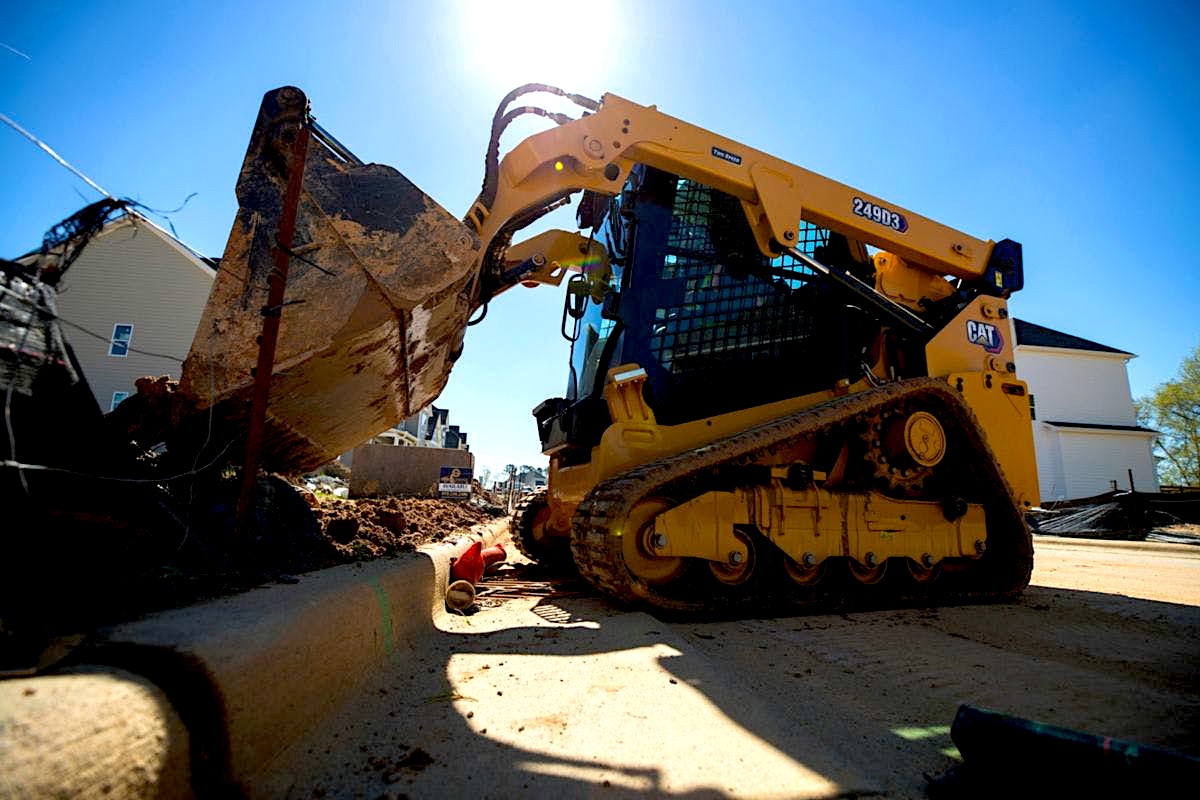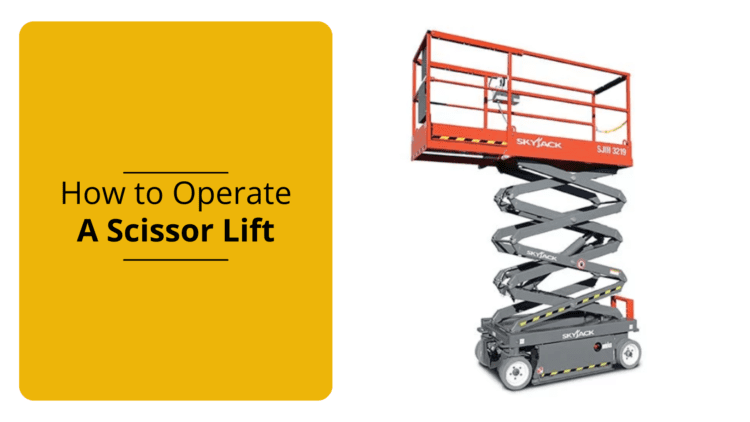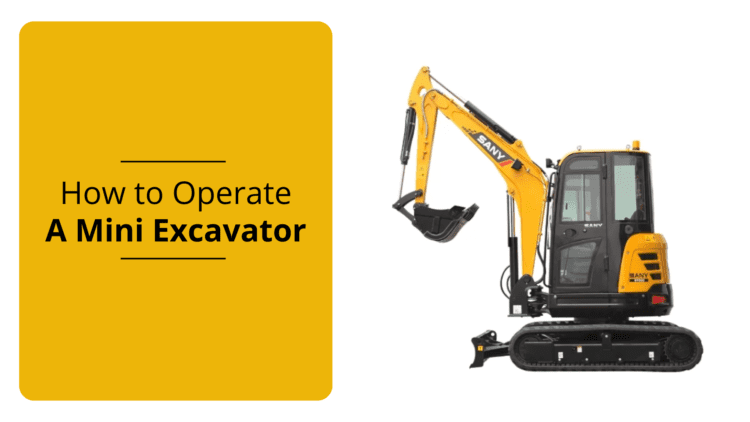A platform lift, commonly known as a scissor lift, serves as an elevated mechanism to hoist workers and materials. It functions by extending vertically in a manner reminiscent of an accordion and can be powered by electricity, diesel fuel, or hydraulics. Scissor lifts find utility in various settings, including warehouses for inventory stacking or removal, as well as tasks like sign maintenance, ceiling work, and window installations.
Prior to utilizing a scissor lift, it is imperative to grasp lift safety protocols. The Occupational Safety and Health Administration (OSHA) mandates that employers provide comprehensive training to workers before they engage with any type of aerial lift.
This guide will delve into operating a scissor lift, safety guidelines, preventive measures, and inspection routines, equipping you with the necessary knowledge to operate a scissor lift effectively and securely.
Operate a Scissor Lift
Scissor lifts come equipped with distinct components: the platform, scissor legs (which extend to elevate workers to their designated work area), a cylinder responsible for powering the legs, the base, and the power source.
Operational controls are conveniently situated on both the base and the platform, facilitating smooth maneuverability of the lift. These controls encompass an array of buttons and switches, granting operators the ability to manage various lift functions both from ground level and overhead. Though variations may exist among individual machines, these controls generally remain consistent across scissor lift models.
Basic scissor lift controls
- Emergency stop button — Depressing this button halts lift operations immediately by cutting power to the control circuit. To resume operation, the emergency stop button must be manually reset by pulling it out.
- Key switch — This switch determines the operational control panel for the scissor lift, offering options for control from the bottom panel, platform console, or both simultaneously. When set to neutral, operational control is accessible from either panel.
- Lower-neutral-raise switch — This switch facilitates platform movement, allowing users to raise, lower, or maintain the platform at a neutral position.
- Indoor and outdoor settings buttons — Certain models feature a selector switch for choosing between indoor and outdoor operating settings, optimizing performance based on environmental conditions.
Platform Controls
- Mode selector — Sometimes referred to as the drive/steer control, this switch offers two options, enabling the operator to either drive the platform or raise/lower it. It’s important to note that you cannot raise or lower the lift while driving.
- Key switch — Use this to turn the machine on or off directly from the platform.
- Joystick — Once you’ve set the mode selector to the desired setting, utilize the joystick to maneuver the lift accordingly.
- In drive mode, pushing the joystick forward propels the lift forward, while pulling it back initiates reverse movement.
- In lift mode, pulling the stick backward raises the platform, while pushing it forward lowers it.
- Emergency stop button — Press this button to halt all operations immediately in case of an emergency.
- Speed switch — Adjusts the speed of the machine, allowing for faster or slower movement as needed.
- Steering — Turns the wheels to the right or left, aiding in steering the machine effectively.
- Horn — Use this feature to alert others when you’re in motion or making adjustments to the scissor lift.
Operating a Scissor Lift
1. Take Safety Precautions in Operating
Understanding how lift controls operate is crucial, but it’s equally vital to grasp the safety measures and be vigilant for potential dangers.
Falls pose a significant risk, which is why scissor lifts come equipped with railings accessed via a protective gate. When boarding a scissor lift, maintaining three points of contact—using both hands on the ladder railings and one foot—is essential.
After entering the platform, always secure the locking gate behind you. Maintain a stable stance on the platform floor and refrain from leaning over its edges. Here are some additional precautions to consider:
- Adhere to the lift’s specified weight limit and avoid transporting items larger than the platform.
- Opt for a four-wheel-drive rough-terrain model when working outdoors on uneven surfaces.
- Stay mindful of weather conditions and refrain from operating a scissor lift in winds exceeding the manufacturer’s recommended maximum (typically 28 mph).
- Be vigilant of overhead clearance, including ceilings, cables, and power lines, which pose a risk of electrocution.
- Assess your work environment, taking note of potential obstacles, ground-level holes, and the presence of other workers nearby.
Furthermore, assess the personal protective equipment (PPE) required for the task at hand. This may encompass eye protection, a harness, a hardhat, and earplugs.
2. Conduct a Scissor Lift Safety Inspection
Before you start operating a scissor lift, it’s crucial to conduct a thorough safety inspection. Ensure that both the vehicle and lift components are in optimal condition and suitable for your specific job site requirements. For instance, if you’re working outdoors on uneven terrain, make sure you have a rough-terrain lift designed for such conditions.
First and foremost, check all the controls to ensure they are functioning correctly on both levels of the lift. It’s particularly important to verify that the emergency stop button is operational and that all other operating switches perform their intended functions reliably.
On the vehicle level, pay close attention to the following during your inspection:
- Wheels and tires
- Fluid levels (look for any signs of leaks)
- Control panel functionality
- Horn and backup alarms
- Gauges and lights
When inspecting the platform level, focus on the following components:
- Operating controls, including the joystick
- Hydraulic and pneumatic systems
- Fuel system
- Electrical system
- Guardrail system
- Fasteners and locking pins
- Fiberglass or insulating material integrity
- Cable and wiring harnesses
Additionally, ensure that all operational and warning placards and controls are clearly visible and legible. Check for any missing, loose, or defective parts that may compromise the safety and functionality of the scissor lift. Taking the time to perform a comprehensive inspection before each use can help prevent accidents and ensure a safe working environment for everyone involved.
3. Turn on the Scissor Lift in Operating
Before initiating the operation of your scissor lift, it’s crucial to ensure that you are working on a flat surface, far from any potential dangers like inclines, obstructions, or depressions. This precaution is vital as the stability of the lift is paramount to prevent tipping when elevated.
Begin by disengaging the emergency stop buttons located at both ground level and platform level. Subsequently, activate the controls, transitioning them to the platform setting before ascending and gaining access through the gate. Once inside the platform, securely lock the gate behind you and firmly plant your feet on the platform floor.
4. Position the Scissor Lift in Operating
Once on the platform, switch the operating mode to drive by toggling the joystick. Utilize the joystick to maneuver the lift to your desired location. Push the joystick forward to move forward or pull it back to reverse. To turn left, press the left steer button located on the top of the joystick; to turn right, press the right button.
5. Raise and Lower the Platform
Once the hoist is positioned, adjust the control switch to the lift mode and push the joystick rearward to elevate it to the desired level. Prioritize safety by scanning for any potential overhead obstacles such as low ceilings, protruding structures, tree limbs, or utility cables. Additionally, ensure that work areas are positioned a minimum of 10 feet away from electrical sources and power lines to mitigate risks.
For extended reach capabilities, consider utilizing the platform’s horizontal extension feature, accessible via a secure side handle and foot pedal mechanism. Engage the extension by releasing both locks and pushing the handle outward while advancing forward. Once the desired extension is achieved, securely lock the platform in position. To retract the extension, release the locks, retract the platform, and re-engage the locks to secure it in place.
Upon completion of tasks or when repositioning the platform to a lower elevation, gently push the joystick forward to initiate the descent. Always prioritize safety protocols and adhere to manufacturer guidelines throughout operation.
6. Shut Down the Scissor Lift after Operating
After completing your work with the scissor lift, start the shutdown procedure by ensuring that you have fully lowered the platform to the ground and verifying that the emergency stop functions properly on both the platform and base controls. Next, power off the machine and proceed to recharge the battery or refill the fuel tank as needed.




